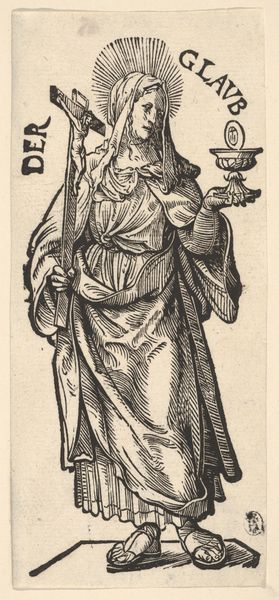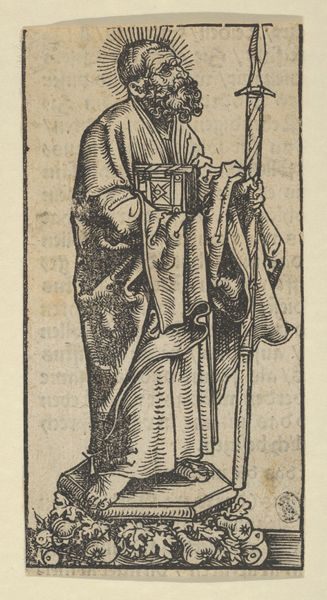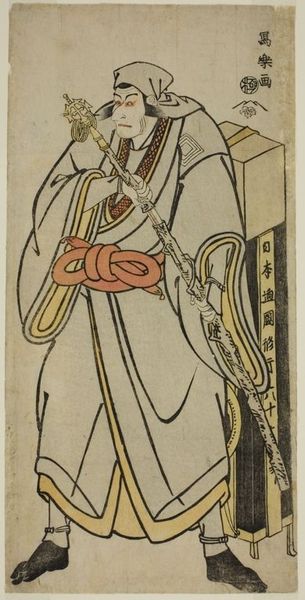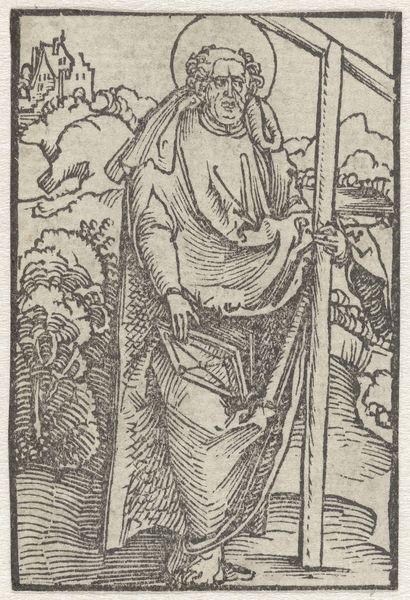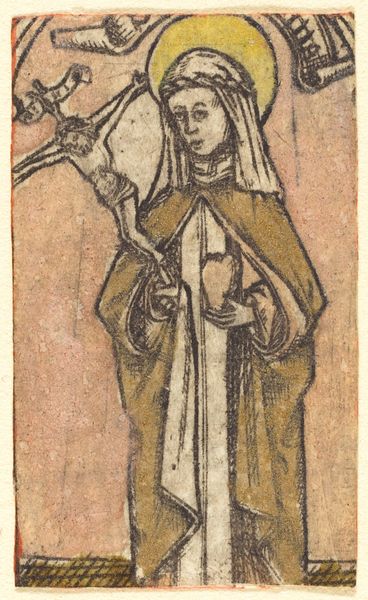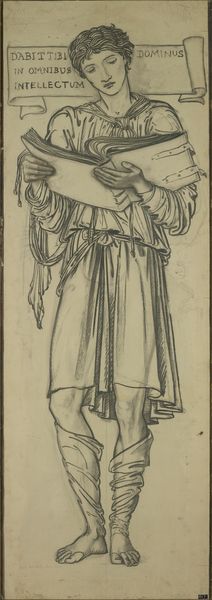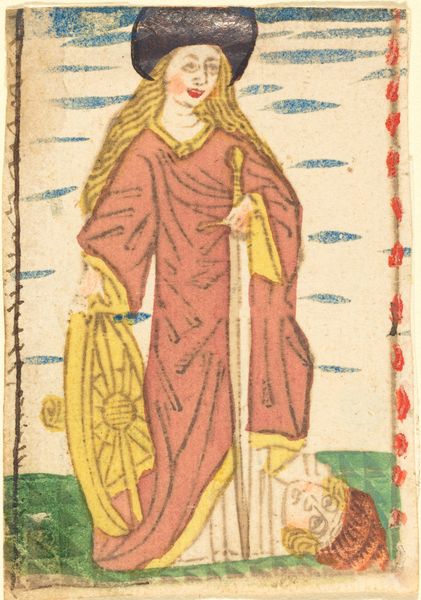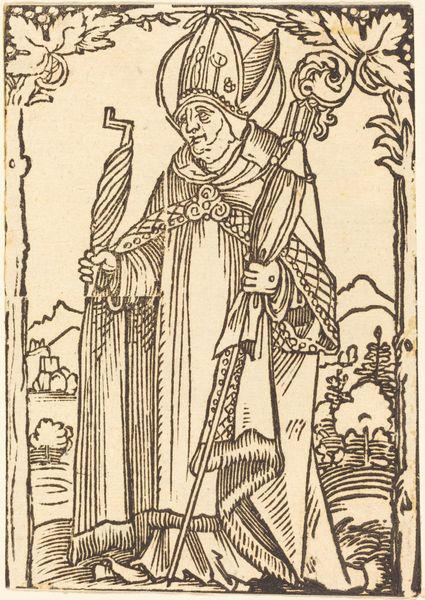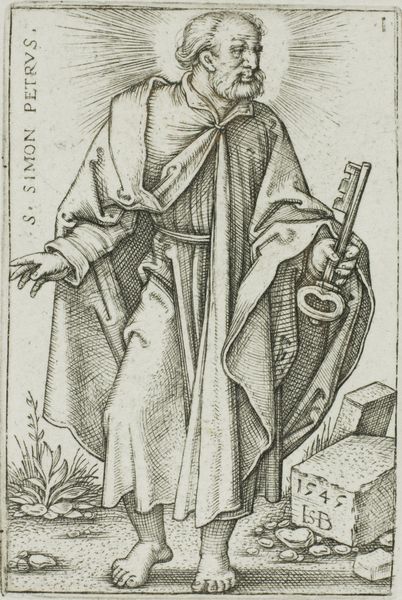
print, woodcut
#
medieval
# print
#
gothic
#
figuration
#
woodcut
#
line
#
history-painting
Copyright: National Gallery of Art: CC0 1.0
Curator: This woodcut, made around 1460, depicts Saint Margaret, one of the most popular saints of the late Middle Ages. Editor: Oh, wow, it has this…quiet strength about it, doesn’t it? I mean, there's this dragon writhing at her feet and yet she looks so completely calm and unfazed, standing there with her cross. Almost dreamlike. Curator: Precisely. Saint Margaret’s story involves being swallowed by a dragon, only to burst forth unharmed through the power of the cross she carried – an exceptionally vivid demonstration of unwavering faith. Note how the unknown artist employs the linework, the economical hatching giving form and volume without superfluous detail. Editor: It's such a stark, elemental composition. Her robe cascades around her, these clean lines and muted colors. There is the barest hint of her red underdress and a subtle halo effect. The stark color and limited palette contribute to the spiritual impact. And yet the monster feels oddly deflated for being evil incarnate! Curator: Consider that her legend spoke to a yearning for spiritual victory and personal redemption. It’s interesting that they chose this moment of stillness and dominance over action or confrontation. The narrative isn’t within the battle but in the implied triumph. Editor: So, this piece… is about line and the composition creates strength? What might be the intended emotional resonance on medieval viewers, facing their own metaphorical dragons, as they beheld such a simple and self-assured image of someone prevailing? This feels strangely poignant, thinking about that context, the woodcut reminding believers they had what was needed within. Curator: Yes, exactly. Its pared-down nature invites deep reflection, maybe an active contemplation. By stripping the narrative back to its core components: woman, beast, symbol— the artwork transmits core thematic material concerning struggle and deliverance. It invites interpretation, leaving lingering questions as well as certainties. Editor: Okay. I get it, it seems that way. To me it shows that beauty doesn't have to be extravagant or showy but sometimes resides best in that kind of peace. I suppose in some ways it invites everyone into their own story.
Comments
No comments
Be the first to comment and join the conversation on the ultimate creative platform.
